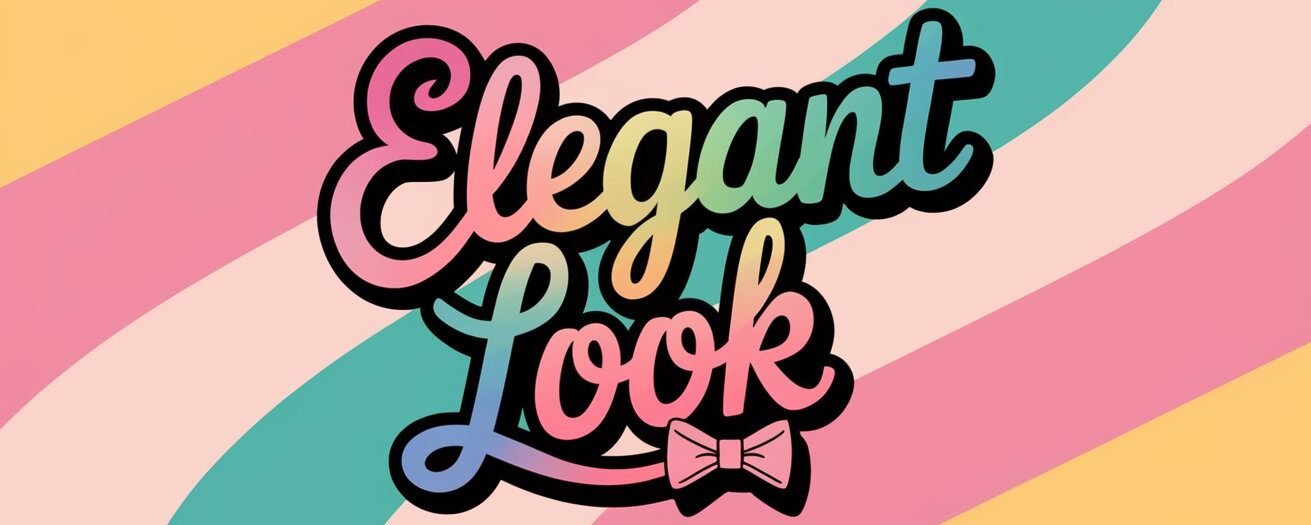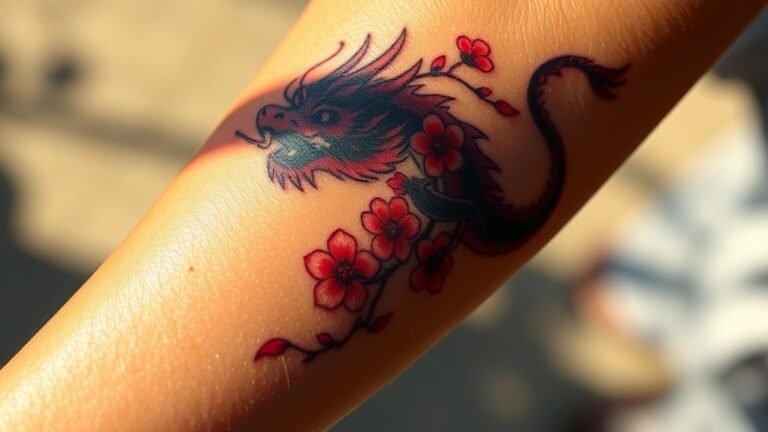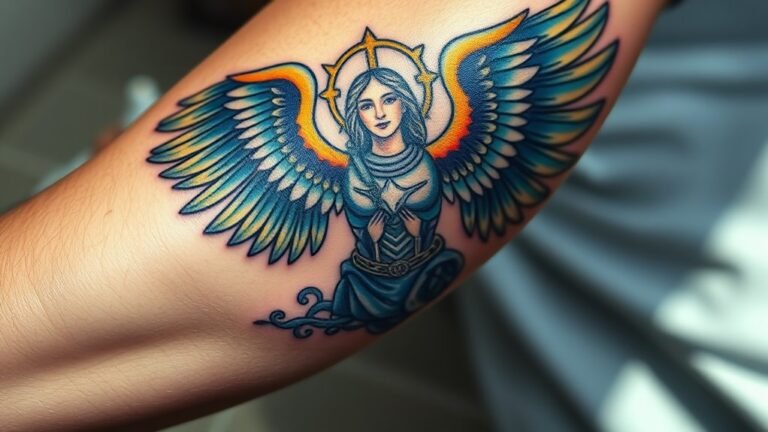Jail Tattoo Meaning and Symbolism
When you think about jail tattoos, it's easy to see them as mere body art, but their meanings run much deeper. Each inked symbol tells a story, revealing the struggles and triumphs of those who wear them. You might notice that common designs, like teardrops or skulls, serve as powerful markers of identity and experience within the prison system. What drives individuals to choose such significant symbols? The answer lies not only in personal narratives but also in the complex culture surrounding these tattoos. Exploring this world uncovers layers of meaning you might not expect.
In a Nutshell
- Jail tattoos often symbolize identity and belonging, reflecting personal struggles and triumphs within the prison environment.
- Common designs like teardrops represent lost loved ones, while skulls convey resilience against mortality.
- Gang tattoos signify loyalty and status, acting as badges of honor among inmates and fostering solidarity.
- Tattoos can attract negative societal perceptions, influencing professional opportunities and interactions outside prison walls.
- The evolution of jail tattoos showcases a shift from stigma to artistic self-expression, transforming pain into meaningful narratives.
Historical Overview of Jail Tattoos
Jail tattoos have a rich history that stretches back centuries, revealing stories etched in ink on the skin of inmates. These markings carry deep historical significance, often born from the struggles and resilience of those within the walls of confinement.
Over time, societal perceptions of these tattoos have shifted; once viewed solely as symbols of rebellion or criminality, they now represent a complex tapestry of identity, belonging, and survival. Each design tells a tale, connecting you to a larger community of individuals who've faced similar battles.
As you explore this world, you'll discover how these tattoos serve as a bridge between the past and present, transforming pain into art, and isolation into a shared narrative of human experience.
Common Tattoo Designs in Prisons
Within the confines of prison walls, a unique language emerges through ink and needle, giving rise to a variety of tattoo designs that convey powerful messages.
As you explore this world of prison art, you'll discover common symbols like teardrops, representing lost loved ones, or the ever-popular skull, signifying defiance against mortality. Each design serves as an outlet for inmate expression, allowing individuals to tell their stories and forge connections with others.
You might see intricate images of roses or flames, symbolizing beauty or passion amidst hardship. These tattoos not only mark personal struggles but also create a sense of belonging within the prison community, where each inked design is a badge of honor, resilience, and shared experience.
Symbolism of Stars and Bars
Stars and bars, a striking combination etched into skin, represent a complex tapestry of meanings within the prison tattoo culture.
When you see star symbolism, it often signifies aspirations or dreams, a reminder of the life outside those walls. Each star can represent a different hope or goal, shining brightly in the midst of darkness.
On the other hand, bar significance evokes a sense of confinement and struggle, a stark reminder of the realities of prison life. Together, these elements weave a narrative of resilience, serving as both a badge of honor and a reflection of survival.
For you, wearing these tattoos can create a sense of belonging, connecting you to a shared experience that few can understand.
Meanings Behind Skull Tattoos
Tattoos can tell powerful stories, and skull tattoos are no exception. Often, these striking designs carry deep meanings rooted in skull symbolism, representing mortality and the fragility of life.
You might find that in various cultures, skulls embody different interpretations—from a reminder to live fully to a tribute to loved ones lost. In some contexts, they symbolize strength, resilience, and a fearless attitude towards death.
As you explore the world of skull tattoos, consider how they resonate with your personal journey. Each inked image can forge a connection, inviting camaraderie among those who share similar experiences or beliefs.
Embracing this art form, you not only wear a tattoo but also carry a piece of cultural history and shared understanding.
Religious Tattoos and Their Significance
Many people find that religious tattoos serve as powerful expressions of faith and personal beliefs.
These tattoos often embody deep spiritual significance, connecting you to a larger community of like-minded individuals. Whether it's a cross, a lotus flower, or a mandala, religious iconography can transform your skin into a canvas of devotion.
Each symbol tells a story, representing hope, redemption, or guidance through life's challenges. By wearing these tattoos, you signal your commitment to your beliefs and your desire for belonging.
They become a source of strength, reminding you of your journey and the values that shape your life. Ultimately, religious tattoos are more than ink; they're a celebration of your spiritual essence and connection to the divine.
Geographic and Cultural Variations
While exploring the world of jail tattoos, you'll discover that their meanings and styles can vary considerably across different cultures and regions. In some areas, tattoos may symbolize resilience and serve as reminders of personal struggles, while in others, they might reflect a deep cultural significance tied to ancestry and tradition.
For instance, Indigenous communities often incorporate symbols that tell stories of their heritage, showcasing unique regional styles that resonate with their identity. Conversely, in other cultures, tattoos might represent rebellion or defiance against authority.
Each design, whether a simple cross or an intricate pattern, carries a sense of belonging, connecting you to a broader narrative within the complex tapestry of human experience.
The Role of Gang Tattoos
Though they often carry a heavy stigma, gang tattoos serve as powerful symbols of identity and loyalty within the intricate web of prison culture. When you see these inked emblems, you can sense the unbreakable bonds they signify. Each design reflects a place in the gang hierarchy, marking status, commitment, or even a rite of passage.
Loyalty symbols etched on skin tell stories of devotion, sacrifice, and belonging, weaving a narrative that transcends mere aesthetics. For those seeking acceptance, these tattoos act as a badge of honor, forging connections that can be both protective and perilous.
In a world where trust is scarce, gang tattoos become a lifeline, grounding individuals in a community that thrives on solidarity and shared experience.
Personal Stories Through Ink
Ink tells stories that words often can't capture, revealing the layers of a person's journey through life, especially in the confines of prison.
Each tattoo becomes a canvas of personal experiences, where every line and color holds meaning. You might find a delicate rose, symbolizing lost love or a fierce lion, representing strength in adversity.
These designs serve as artistic expression, allowing you to communicate emotions that remain unspoken. With each needle prick, you etch your struggle, triumph, and identity onto your skin.
In a space where connection feels lost, these tattoos foster belonging, creating a bond with others who understand the unyielding power of ink.
Through your ink, you tell your story, creating a legacy that transcends the walls around you.
Gender Differences in Tattoo Choices
Many people find that their tattoo choices often reflect their gender identities and societal expectations. For instance, you might notice that women often gravitate towards softer tattoo styles, like floral designs or delicate script, embracing femininity.
Meanwhile, men may opt for bold, aggressive imagery, such as skulls or tribal patterns, aligning with traditional masculine ideals.
However, these gender preferences are evolving. You could see a growing number of individuals challenging stereotypes, mixing styles and embracing tattoos that resonate personally rather than conforming to societal norms.
This shift creates a rich tapestry of self-expression, where everyone can find belonging and meaning in their ink.
Ultimately, your choices can tell a unique story, transcending gender and embracing authenticity.
Legal Implications of Jail Tattoos
While you might think of tattoos as purely artistic expressions, the reality within the confines of a jail cell can be far more complex. Inmates often face strict tattoo regulations, which can lead to serious legal consequences.
Getting inked without permission might result in disciplinary actions, extending your sentence or even solitary confinement. The symbolism behind these tattoos can also draw unwanted attention, tying you to gangs or illegal activities, further complicating your situation.
If you seek belonging, understanding the implications of each design is vital. A simple mark can define your identity, but it can also shape your future in a system that judges you harshly.
The Evolution of Tattoo Culture
As society's perception of tattoos has shifted over the decades, you'll find that what once marked the outcasts now often symbolizes individuality and artistry.
Tattoo trends have evolved from prison markings to elaborate canvases of self-expression. Today, you might see your friends sporting intricate designs that tell personal stories or celebrate cultural heritage.
Yet, with this growth comes the challenge of cultural appropriation, where meaningful symbols are sometimes stripped of their original significance. Guiding through this landscape requires sensitivity and respect for the cultures behind the ink.
Ultimately, as you embrace this vibrant art form, remember that each tattoo can be a bridge, connecting you to a community that values creativity, history, and shared experiences.
Frequently Asked Questions
How Do Inmates Typically Get Access to Tattooing Supplies?
Inmates often scavenge or barter for tattooing supplies, crafting tools from everyday items. Within prison culture, they share techniques and designs, creating a sense of belonging while expressing individuality through their unique body art.
What Are the Risks Associated With Jail Tattoos?
You're diving into a world of risks with jail tattoos. Health risks lurk in unsanitary conditions, while legal implications can haunt you long after. Think carefully—belonging shouldn't come at such a high price.
Are Jail Tattoos Permanent or Easily Removable?
Jail tattoos are often permanent, but you've got options. Laser removal can help, though it might not erase every trace. With time, tattoo fading can soften their impact, giving you a fresh start if desired.
Can Jail Tattoos Affect Post-Release Employment Opportunities?
Yes, jail tattoos can affect your post-release employment. Many employers still hold stigma perceptions about them, impacting your chances in the job market. Overcoming this hurdle requires resilience and a focus on your skills and growth.
How Do Families of Inmates Perceive Jail Tattoos?
Families often perceive jail tattoos as emotional scars, reflecting pain and struggles. They might feel a mix of pride and shame, grappling with their loved one's choices while longing for connection and understanding amidst the turmoil.







